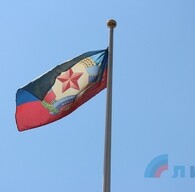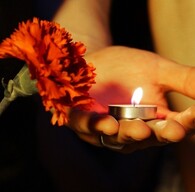Taking control of the Security Service of Ukraine (SBU) building in Lugansk in April 2014 was the crystallization point for people’s anger, said Vladimir Dal Lugansk State University Assistant Professor, LPR Public Chamber member Alexander Protsenko.
“April 6 became the crystallization point for people’s anger, mistrust and condemnation of what had been happening in Kiev, and it certainly made this protest flare up,” Protsenko said.
He believes that the attack on the SBU would have been unnecessary if the local elites of the then Lugansk region had not been afraid of leading the protests.”
“The protest would have developed under a different scenario, perhaps the Crimean scenario would have been more prominent and realizable, but as it was, the people who had got no support from their legal political representatives, did what had been done in the west (of Ukraine),” the political scientist said.
The SBU building events occurred because the Lugansk region population had not been heard and had been driven to despair, he went on to say.
“Of course the tensions at the protests were so high that they could not but manifest themselves. People took to the squares because of the feeling of humiliation and deprivation of rights as they understood that they could only defend their rights with weapons in hand,” Protsenko said.
On April 6, 2014, a rally in support of constitutional rights took control of the SBU building in the Lugansk region. Later on, the LPR Head later issued a decree to establish a memorable date and LPR statehood traditions.
The Russian Spring was a period of political protests and rallies to protect the status of the Russian language. In late February - early March 2014 the protests spread across southeastern Ukraine after the government coup in Kiev. The outcome of the Russian Spring was the emergence of the Lugansk and Donetsk People’s Republics.
The Lugansk People’s Republic acceded to Russia on September 30, 2022 following the unification referendum.*i*v


